Moose enjoys spring sunshine in Algonquin Provincial Park
On a visit to Algonquin Provincial Park in Ontario, Bob and I were thrilled to discover a Moose (Alces alces) in a boggy area just to the side of the highway. It was a nice spring day, so the Moose was encouraged to leave the protection of the forest and soak up the warmth of the bright sunshine.
The past winter here in Ontario had been extremely hard on all the wildlife due to a prolonged period of subzero temperatures and very heavy snowfall. This Moose was showing signs of the wear and tear of the severe winter months. It was quite lean, even appearing a bit weak, but add to that the shedding of its winter coat, and the Moose looked quite scruffy.
Undeterred by ourselves and other sightseers who had pulled off onto the shoulder of the road, the Moose proceeded to a puddle of water. In the springtime, Moose are attracted to water alongside the roadway because it is salty. That is the result of runoff from the the highway where salt is employed during the winter months to melt snow and ice.
To meet their requirements for sodium the remainder of the year, Moose eat large quantities of aquatic plants. As much as half of their diet consists of yellow pond lilies, pondweed and water shield, but these provide little energy. For nourishment, Moose eat terrestrial plants such as herbaceous flowering plants, new growth on deciduous trees, leaves and lichens. During the winter, there are slim pickings, and that is when a moose may be seen using its huge front hooves to uncover mosses, shrubs, lichen and even pine cones beneath the snow.
It was impossible to say whether the moose we were looking at was a male or female, a young bull or cow. If it was later in the season, a male would have a new set of antlers beginning to emerge from the skull, but until such time, your guess is as good as mine. Both a bull and a cow stand between 4.6-6.9 feet (1.4-2.1 m) at the shoulder, and can measure between 7.9-10.5 feet (2.4-3.2 m) in body length with males weighing significantly more than females. Moose are the largest of all deer species and the second largest land animal in North America after the bison.
As the Moose slurped up the brackish water, I was surprised at how far the sound carried there along the windswept shoulder of the roadway. With its neck extended downwards to reach the puddle, it accentuated the long face and muzzle that dangles over the chin. The muzzle is the result of an overhanging, flexible upper lip. Male Moose have a swaying flap of fur-covered skin that hangs beneath their throats. The size and shape of this pendulous mass of skin varies with age and can grow to be one foot (30 cm) long. This mysterious “dewlap” is called a bell.
Moose get their name from the Algonquian language where the word mooswa means “twig eater”, and the word moosu means “he strips off”. The name refers to the Moose’s habit of eating twigs and its special ability to grab a branch with its prehensile lip, hold it snug with the strong tongue, and strip all the leaves in a single mouthful by jerking its head sideways. The sensitive prehensile lip also makes it possible for a Moose to distinguish between fresh shoots and hard twigs, and to pull up forbs and aquatic plants roots and all.
Young Moose or calves have light brown fur that darkens as they mature. Mature Moose are found in a variety of colours ranging from a dark brown coat, almost black, to a reddish or greyish brown. An interesting fact is that the hair of the outer coat is long and hollow, so in combination with the dense soft undercoat, it enables Moose to withstand the coldest winter temperatures. The hollow hair serves another purpose as well, providing buoyancy when a Moose is in water. As can be seen in my photo, a Moose’s long, stilt-like legs have greyish or white markings called stockings.
In Ontario, a Moose’s habitat includes the perimeter of lakes, muskegs and streams of the boreal forest. Moose are adapted to that environment with huge divided hooves that act as snowshoes to support the animals in snow or when crossing soft muskeg. As we observed this Moose when it crossed the wet, spongy ground, we took note of how its long legs enabled it to step more easily over deadfall trees, and the same could be said for any Moose when traversing an area of deep snow. During the coldest winter months, they stick to the deep forests where snow levels are reduced, but now, with little snow cover remaining, Moose are frequently seen visiting roadside marshes and swamps. We were grateful for the opportunity to observe this stately creature, an iconic symbol of Canada’s wilderness.

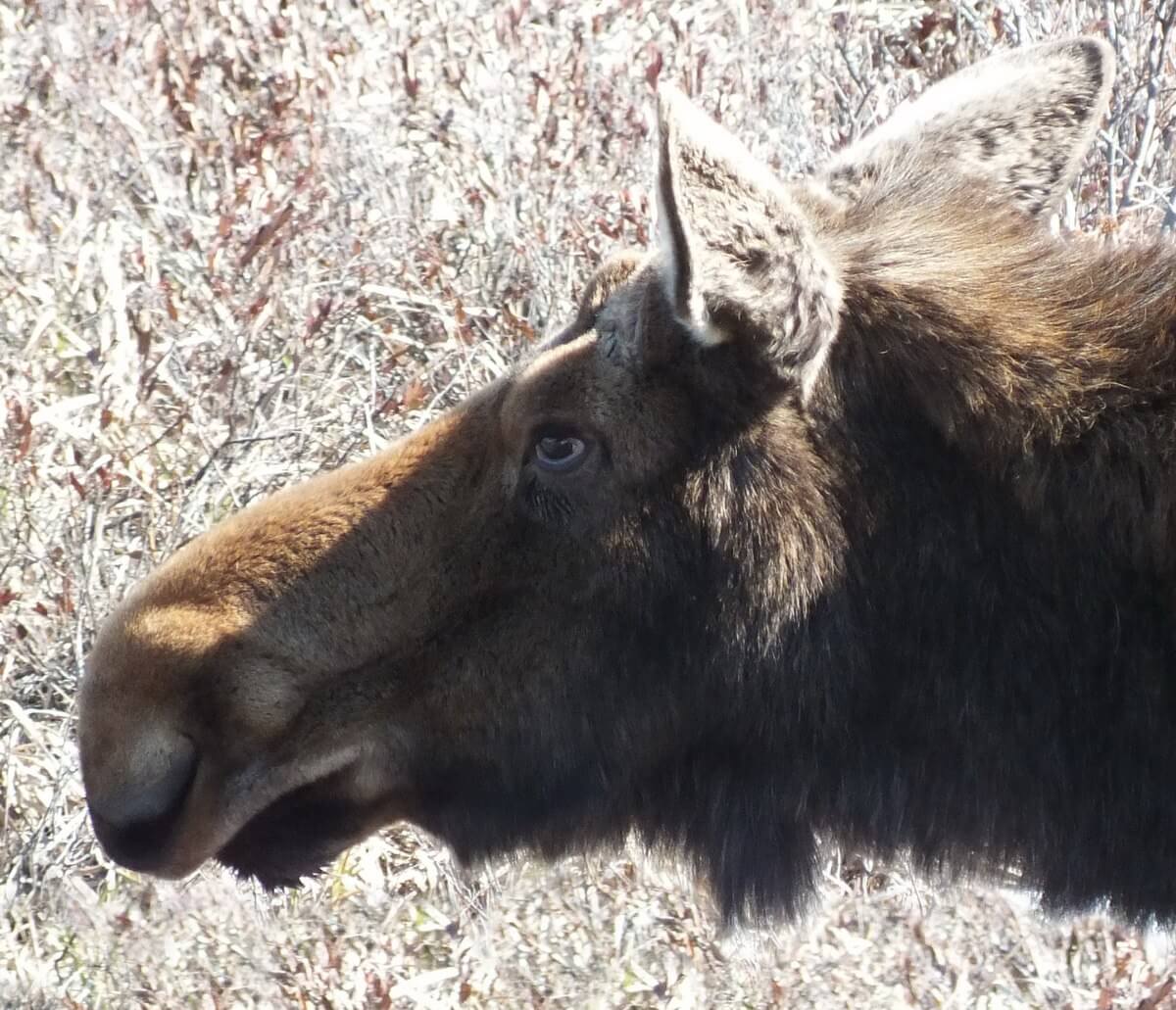

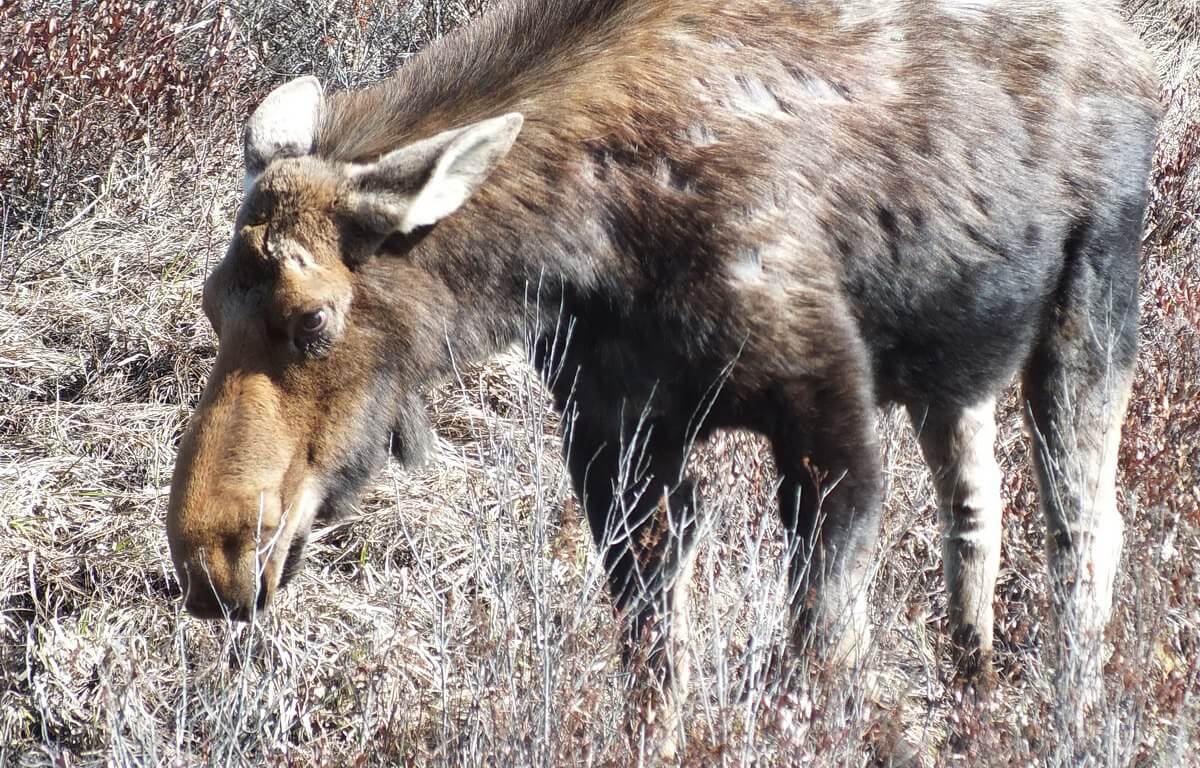
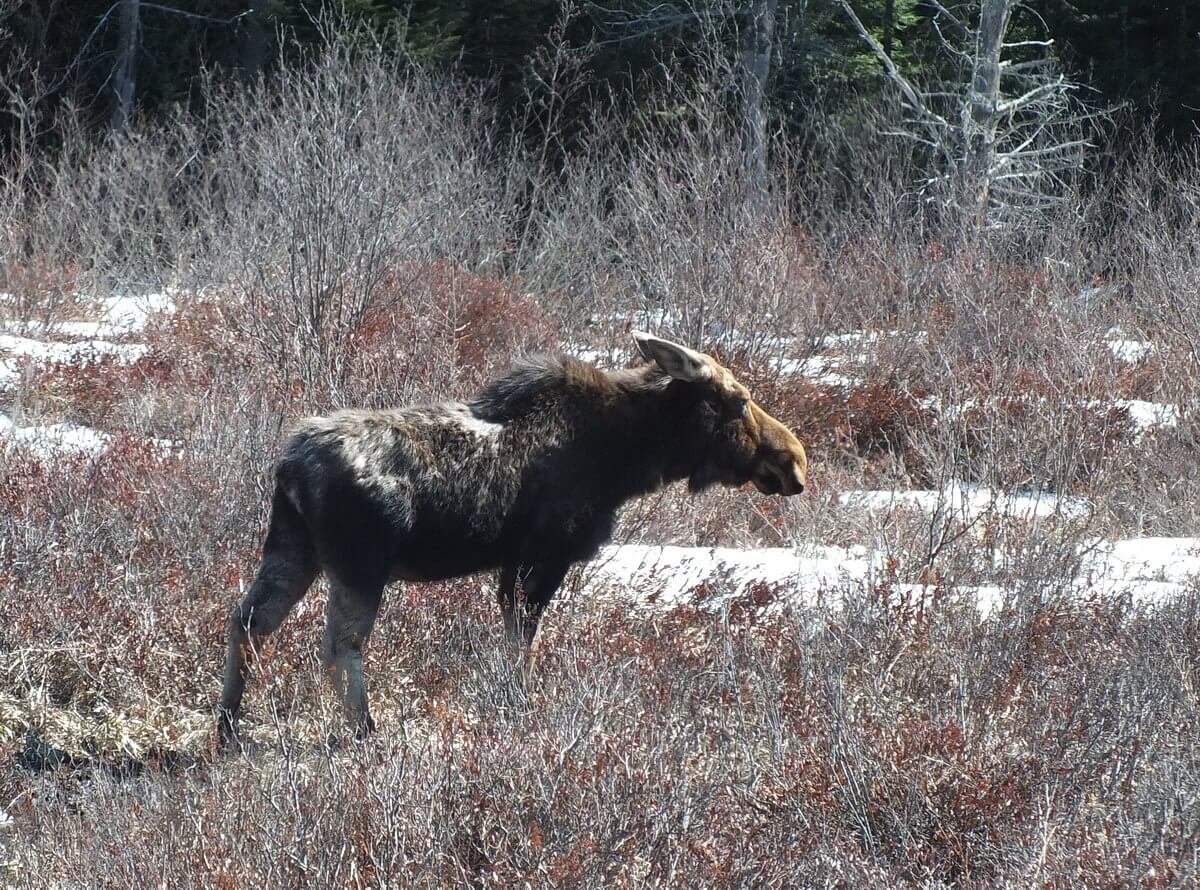


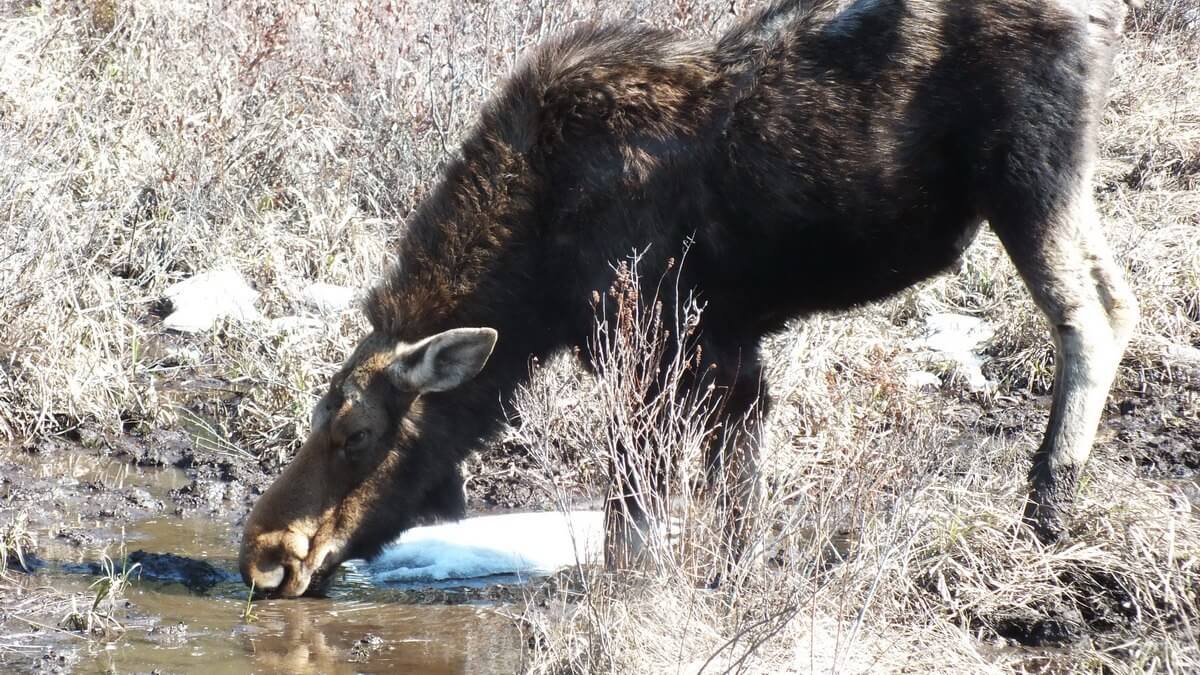
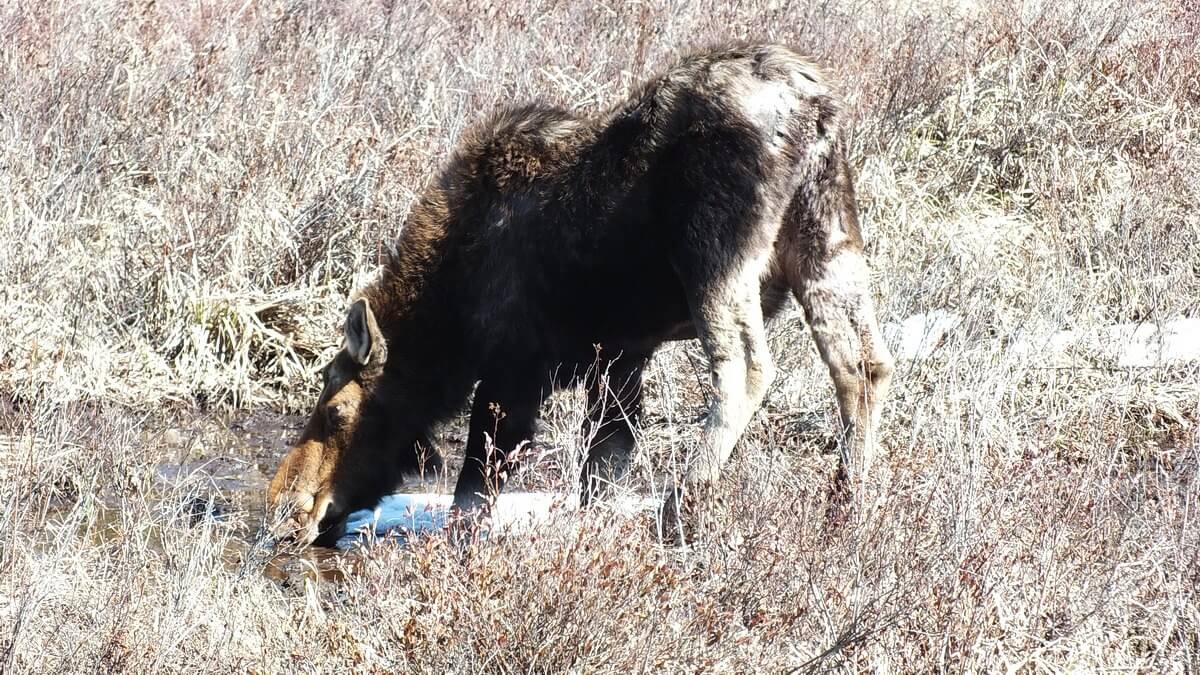
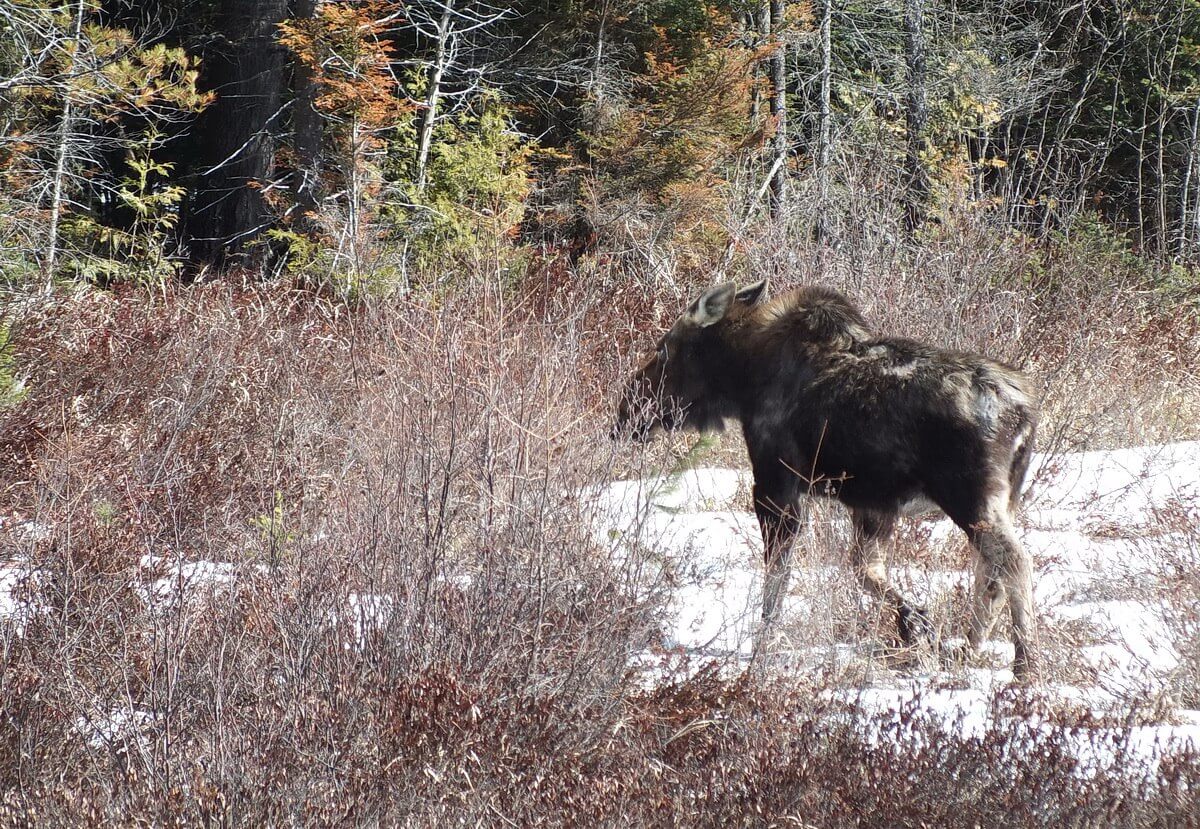
the moose looks very friendly!
This Moose may look friendly, but do not be fooled. These majestic animals are amazingly quick and agile for their size. Female Moose, in fact, are reported to be the most dangerous animal in Canadian forests and account for more deaths than any other animal including the Grizzly Bear. This early in the spring, they pose little threat, but between mid-May and June, a female can be very aggressive if defending her newborn calves. Male Moose, on the other hand, are most aggressive in the fall during mating season.